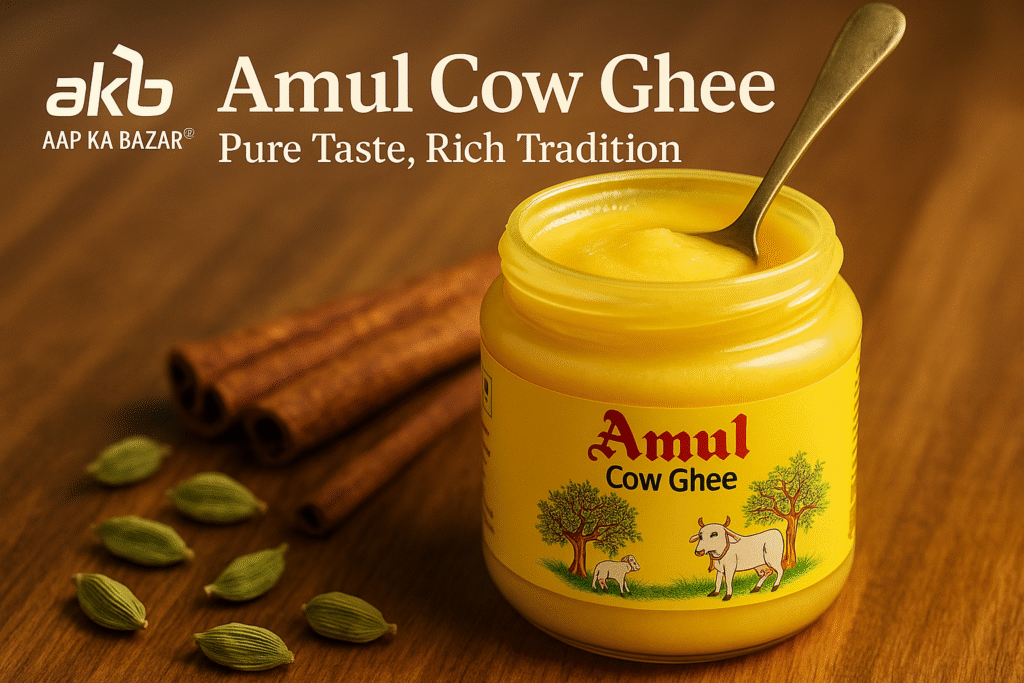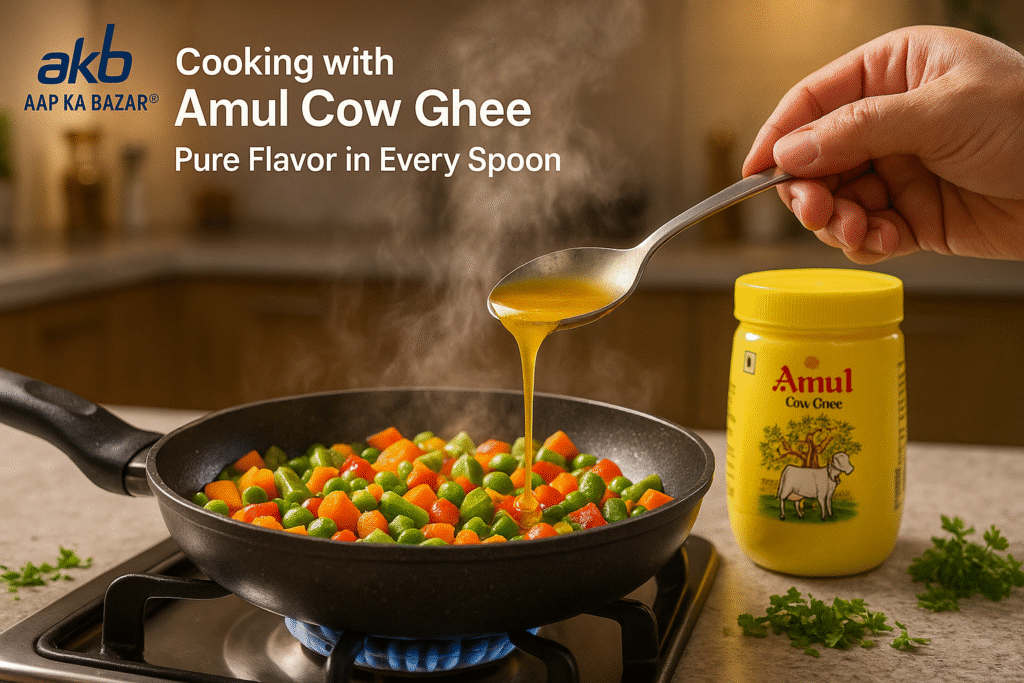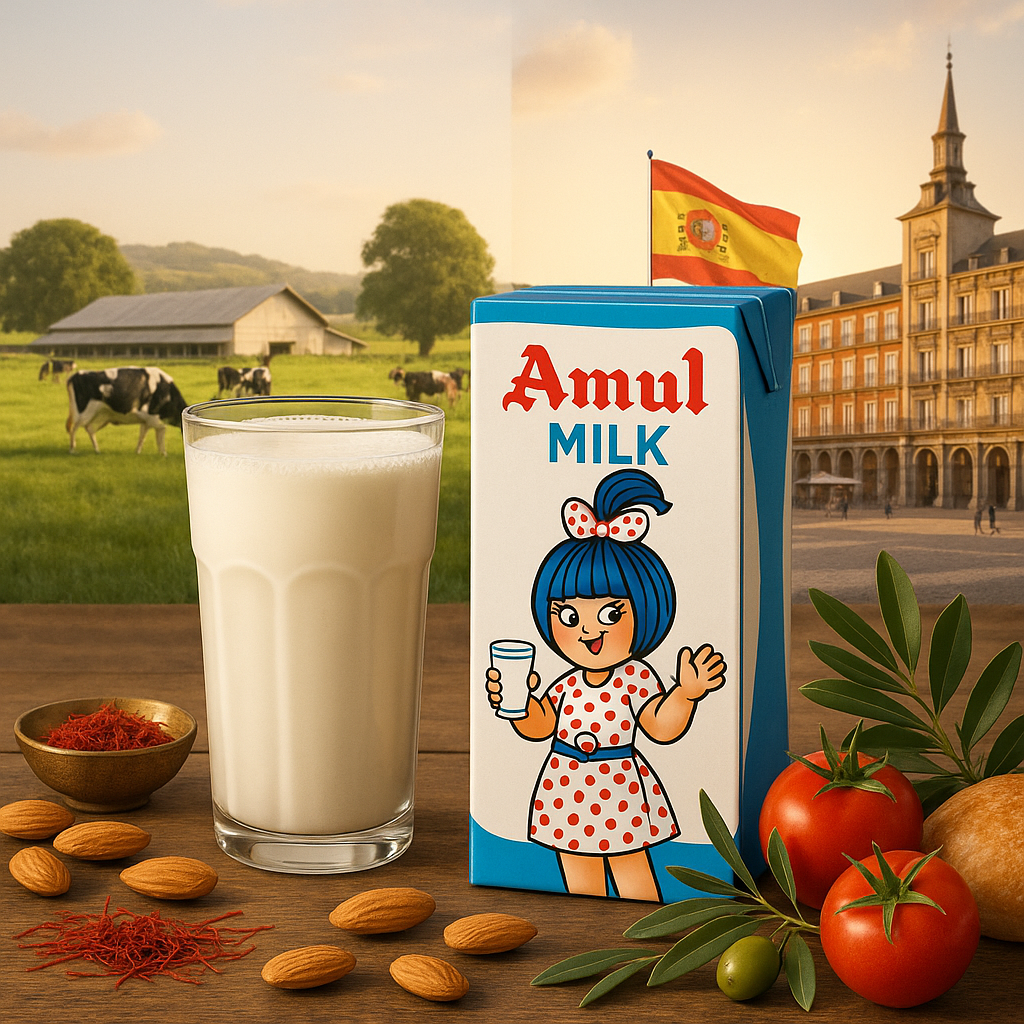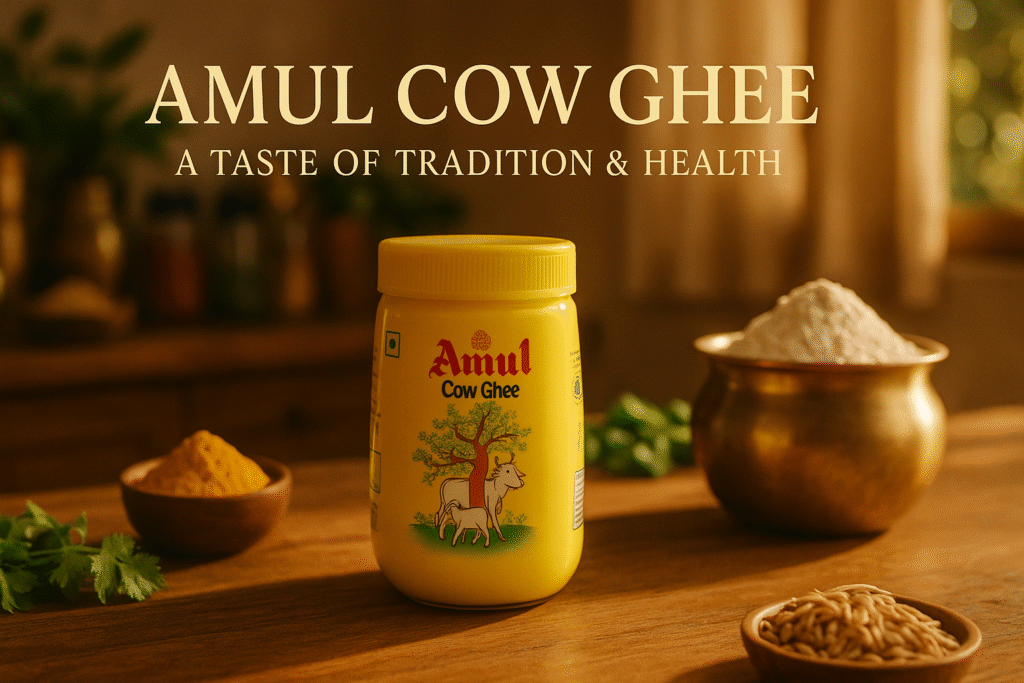Why Amul Cow Ghee Still Holds a Place in Our Hearts (and Kitchens)
You know that moment when you open a jar of ghee and that warm, nutty smell just hits you? For me, it’s like being pulled straight back into my childhood sitting in my grandmother’s kitchen, watching her drizzle ghee over piping hot rotis or swirl a spoon into dal. It’s more than food, it’s comfort, tradition and a little piece of home.
In India, ghee isn’t just another cooking ingredient. It’s a part of who we are. From ancient rituals to everyday meals, it’s been around for centuries, carrying stories, memories, and a whole lot of flavor. Even now, with all the fast food and ready to eat packets flooding our lives, ghee still sits proudly on the kitchen shelf and there’s a reason for that.
Amul Cow Ghee in Indian Tradition: A Golden Legacy
Ask anyone in your family, and they’ll tell you ghee has always been considered special. In Ayurveda, it’s called Amrita, which literally means “nectar”. It’s been offered in religious ceremonies, used in home remedies, and treated as a sign of prosperity.
In most homes, you can’t imagine a meal without it. A dollop on rice, a brush over parathas, or that magic touch in laddoos and halwa ghee somehow makes everything taste richer, warmer, more complete.
And when it comes to brands, Amul Cow Ghee isn’t just another option. It’s a name people trust, generation after generation.
Why Amul Cow Ghee Fits the Modern Kitchen
Sure, ghee is old-school, but these days, it’s also making a comeback as a kind of “superfood.” Health-conscious folks are realising it’s not the enemy in fact, it’s one of the purest, most wholesome fats you can add to your meals.
Here’s why it stands out:

- That authentic taste – Pure cow’s milk, rich aroma, and a hint of sweetness that blends perfectly with Indian dishes.
- No nonsense – Amul’s process keeps it free from preservatives or artificial stuff.
- Works for all cooking styles – Frying, sautéing, tempering — it can handle heat without losing its goodness.
- Nutrient-packed – Vitamins A, D, E, and K, all essential for health, in one spoonful.
The Health Side of Amul Cow Ghee
We’ve been told to fear fats, but not all fats are bad and ghee is proof.
- Helps immunity – Antioxidants in ghee protect your body from damage.
- Good for digestion – Contains butyric acid, which is great for gut health.
- Supports the heart – In moderation, it can actually help balance cholesterol.
- Weight-friendly – It can help your body burn fat more efficiently.
- Safe for many with lactose intolerance – Since it’s clarified butter, it has no lactose or casein.
Ways to Use Amul Cow Ghee Every Day

Ghee is one of those things you can use in countless ways:
- Drizzle over hot rotis or parathas.
- Add to dal or curries for aroma and depth.
- Make Indian sweets that actually taste like they should.
- Use for tadka or light frying without worrying about smoke.
- Even stir into your morning coffee for a slow-release energy boost.
A Taste That Connects Generations

Cooking with Amul Cow Ghee feels like carrying forward a piece of family history. It’s the same taste your parents grew up with, the same comfort you remember from festivals and Sunday lunches.
In today’s world of refined oils and artificial flavours, this ghee is a reminder of how real, natural food just… feels better.
Why It Still Matters

Funny thing is, the world’s catching up now. Keto, paleo, and other international diets are all praising ghee for its healthy fats and nutrients — things our grandmothers already knew ages ago.
No matter your lifestyle — gym-goer, busy professional, or someone who just loves good food — ghee has a place in your diet. Not as a guilty pleasure, but as something that truly benefits you.
Also, with its rich legacy and commitment to quality, Amul continues to bring authentic Indian taste to tables around the world — and now, with the launch of fresh milk in Spain, the brand has proudly marked its first step into Europe in June 2025.



